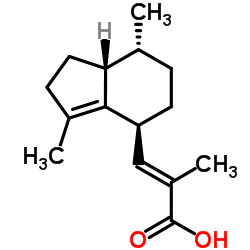Chemical fingerprinting of valeriana species: simultaneous determination of valerenic acids, flavonoids, and phenylpropanoids using liquid chromatography with ultraviolet detection.
Andres Navarrete, Bharathi Avula, Young-Whan Choi, Ikhlas A Khan
Index: J. AOAC Int. 89(1) , 8-15, (2006)
Full Text: HTML
Abstract
The roots and rhizomes of various valeriana species are currently used as a sleeping aid or mild sedative. A liquid chromatography method has been developed that permits the analysis of chlorogenic acid, lignans, flavonoids, valerenic acids, and valpotrates in various valerian samples. The best results were obtained with a Phenomenex Luna C18(2) column using gradient elution with a mobile phase consisting of water and 0.05% phosphoric acid and 2-100% acetonitrile-methanol (1 + 1) with 0.05% phosphoric acid. The flow rate was 0.8 mL/min and ultraviolet detection was at 207, 225, 254, 280, and 325 nm. Different valerian species and commercial products showed remarkable quantitative variations. Chlorogenic acid (0.2-1.2%), 3 lignans, linarin (0.002-0.24%), and valepotriates were detected in all the valeriana species analyzed. Highest amounts of valerenic acids were detected in V. officinalis L., trace amounts in V. sitchensis, and none in the other species analyzed.
Related Compounds
| Structure | Name/CAS No. | Molecular Formula | Articles |
|---|---|---|---|
 |
Valerenic acid
CAS:3569-10-6 |
C15H22O2 |
|
Concise synthesis of Valerena-4,7(11)-diene, a highly active...
2010-01-01 [Biosci. Biotechnol. Biochem. 74(9) , 1963-4, (2010)] |
|
Root colonization by symbiotic arbuscular mycorrhizal fungi ...
2010-03-01 [Planta Med. 76(4) , 393-8, (2010)] |
|
Valerian extract and valerenic acid are partial agonists of ...
2005-08-18 [Brain Res. Mol. Brain Res. 138(2) , 191-7, (2005)] |
|
Valerian extract characterized by high valerenic acid and lo...
2012-10-15 [Phytomedicine 19(13) , 1216-22, (2012)] |
|
Pharmacokinetics of valerenic acid after administration of v...
2005-09-01 [Phytother Res. 19(9) , 801-3, (2005)] |